This South Korea itinerary provides a wonderful introduction into the land of the morning calm. Most people that travel to South Korea rarely travel farther than Seoul.
The Korean capital is magnificent. However, it is by no means the extent of what Korea has to offer.
Busan, Jeju, Jeonju, and Gyeongju are all wonderful places that are seldom (if ever) heard of on an international scale. South Korea escapes most people’s travel radar. But embarking on a South Korea itinerary is a once-in-a-lifetime experience.
You could spend months in South Korea and feel as though you have barely scratched beneath the surface. As a matter of fact, you could spend a month in Seoul and feel as though you have barely scratched beneath the surface!
Suggested 14 Day South Korea Itinerary
This South Korea itinerary focuses on spending two weeks in Korea. This is a good amount of time for a first trip, and to get a taster of Korean culture, history, and life.
Possible extensions and amendment options are given. The country’s main international airport (Seoul Incheon) is located just outside of the capital of Seoul.
So, it makes sense to start your Korea itinerary here. If you are traveling onwards from Korea to Japan or other countries in Asia, there is a limited selection of flights that depart from Busan to the likes of Osaka, Tokyo, etc.
Seoul (Days 1 – 3)
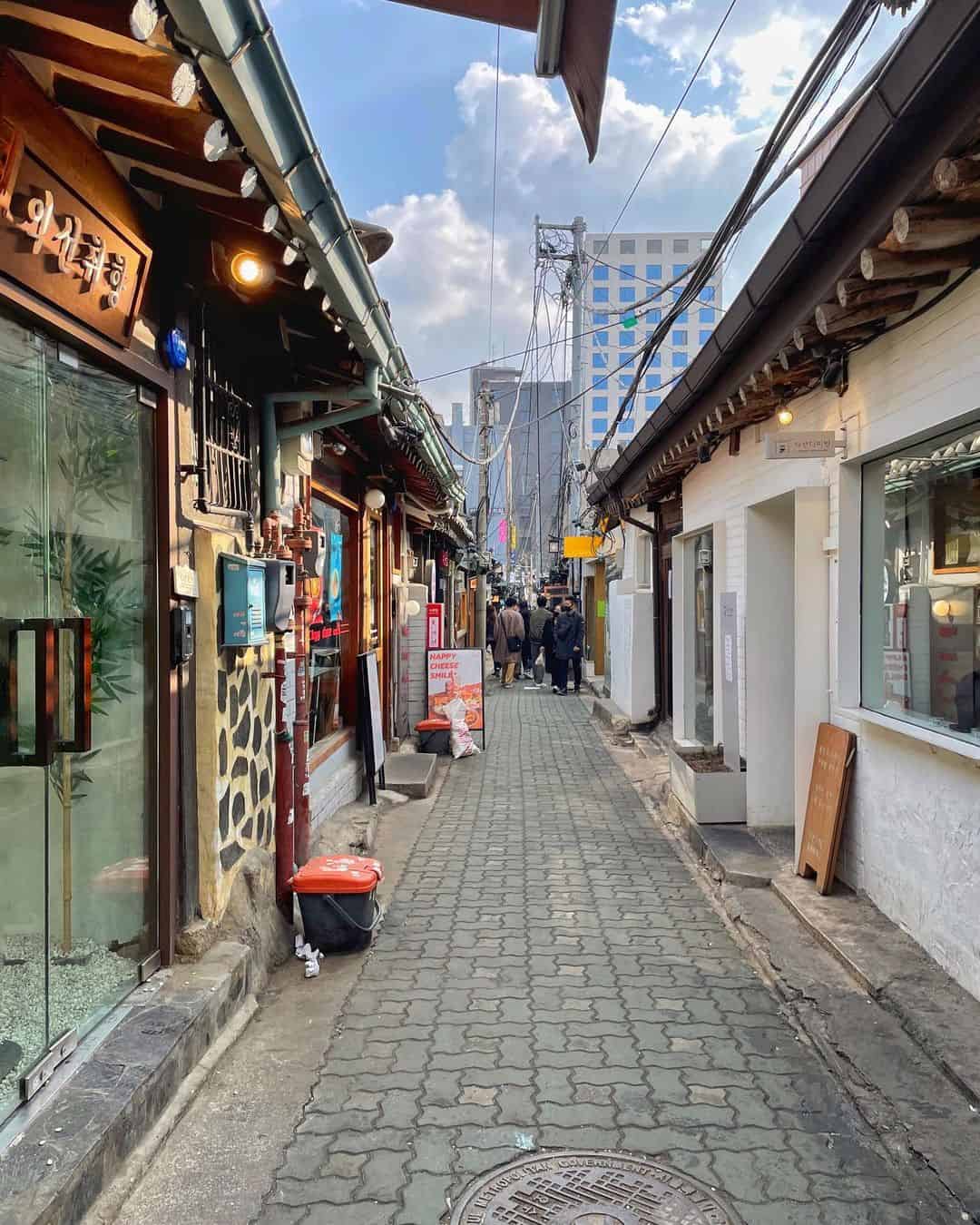
Seoul sits at a magnificent juxtaposition of East meets West, and ancient tradition meets modern, contemporary living. When you first arrive in Seoul, it can be a little intimidating.
The Korean capital looks like a sprawling megalopolis filled with towering, glittering hi-rises, and crowded streets. But look a little closer and you notice that Seoul is composed of a number of quaint districts, each with its own personality.
Seoul Highlights
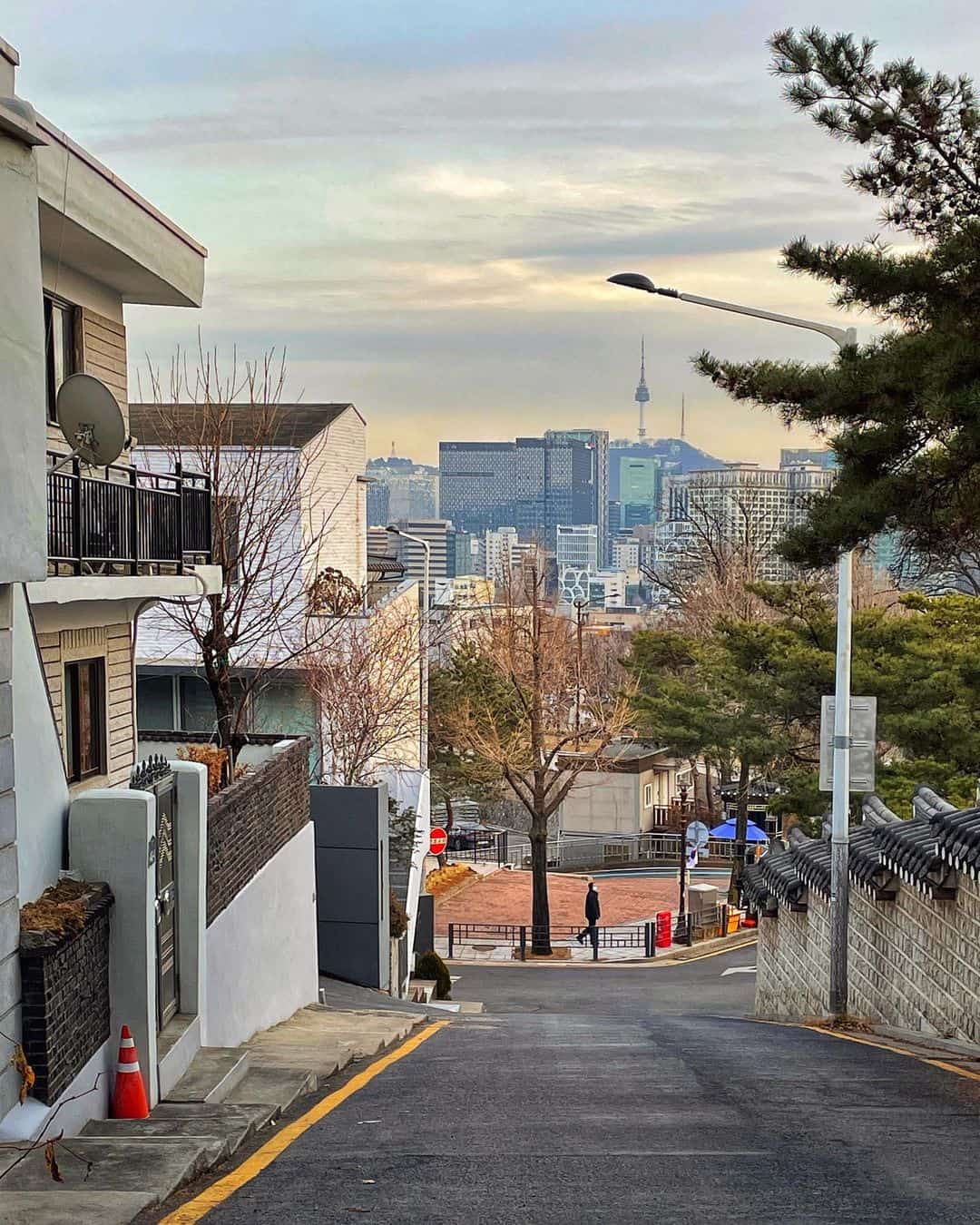
- Stay in a cute traditional hanok house in Bukchon Hanok Village
- Check out the street art at Ihwa Mural Art village
- Hang out in the historic tearooms of Insadong
- Watch the changing of the guards at Gyeongbokgung
- Explore the markets of Noryangjin, Ansan, Dongdaemun, and Gwangjang
- Take the cable car to the top of Mount Namsan and enjoy the city panoramas
- Relax in the steam rooms and fragrant baths of a Korean jimjilbang (bathhouse)
Day One: Bukchon and Insadong
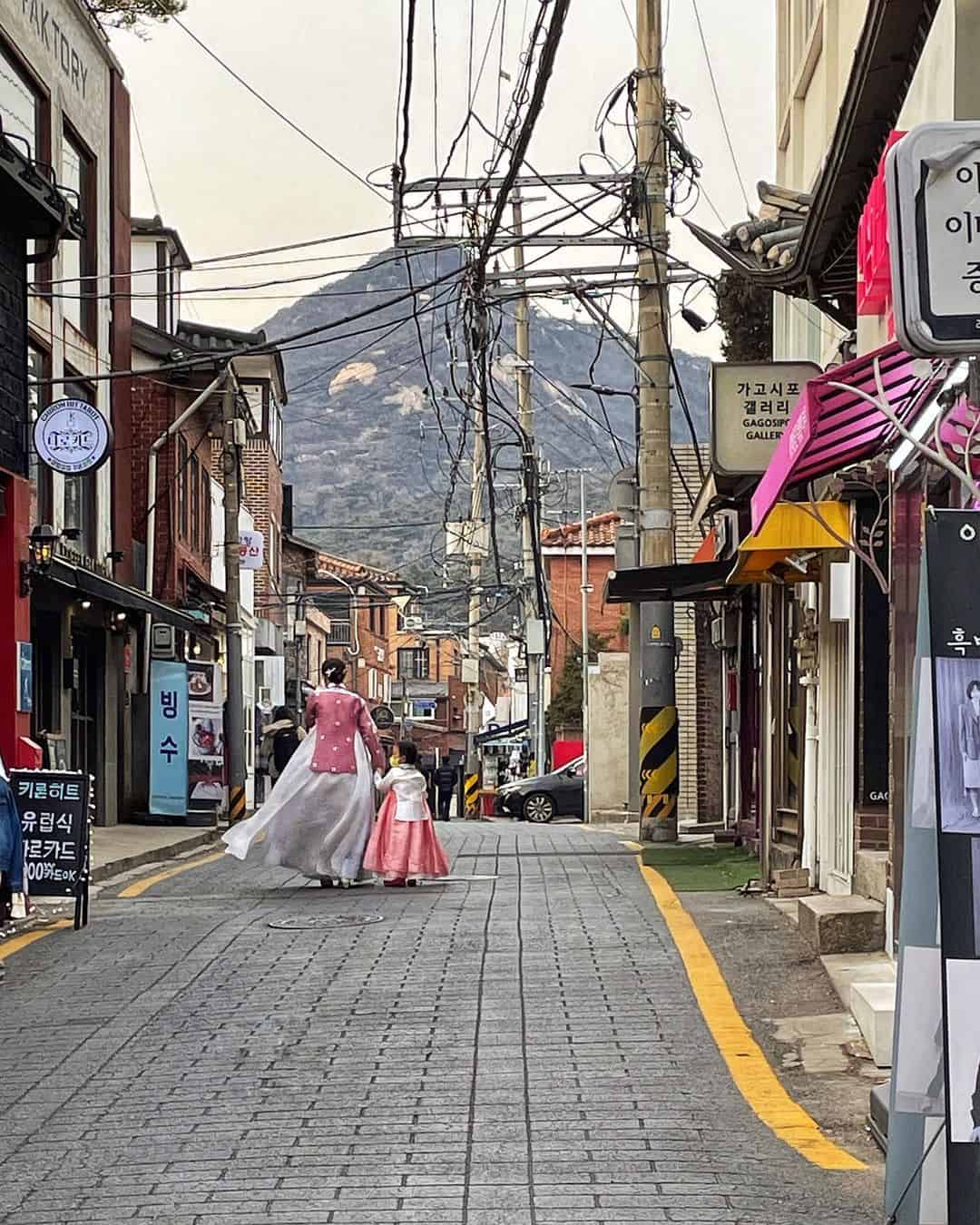
For the ultimate ¨only in Korea¨ type experience, opt to spend the first couple of nights of your Korea itinerary in a hanok house. Bukchon hanok village, in central Seoul, is the perfect opportunity for that.
The traditional houses here were once home to Korean nobility during the Joseon dynasty (14th century-1897). They have been incredibly well preserved and traveling here feels like being transported back in time.
Bukchon is a rabbit warren of alleyways and narrow streets which lead up into the hills. Most of the former hanoks have now been converted into artisanal stores selling traditional handicrafts, art galleries, restaurants, and guesthouses.
Simply allow yourself the time to get lost in these narrow, cobbled passageways, admiring the eccentric street art, and stopping for a coffee or to window-shop as you go. Bukchon places you close to the next destination on this Korea itinerary: Gyeongbokgung Palace.
Watch the changing of the guards at Gyeongbokgung
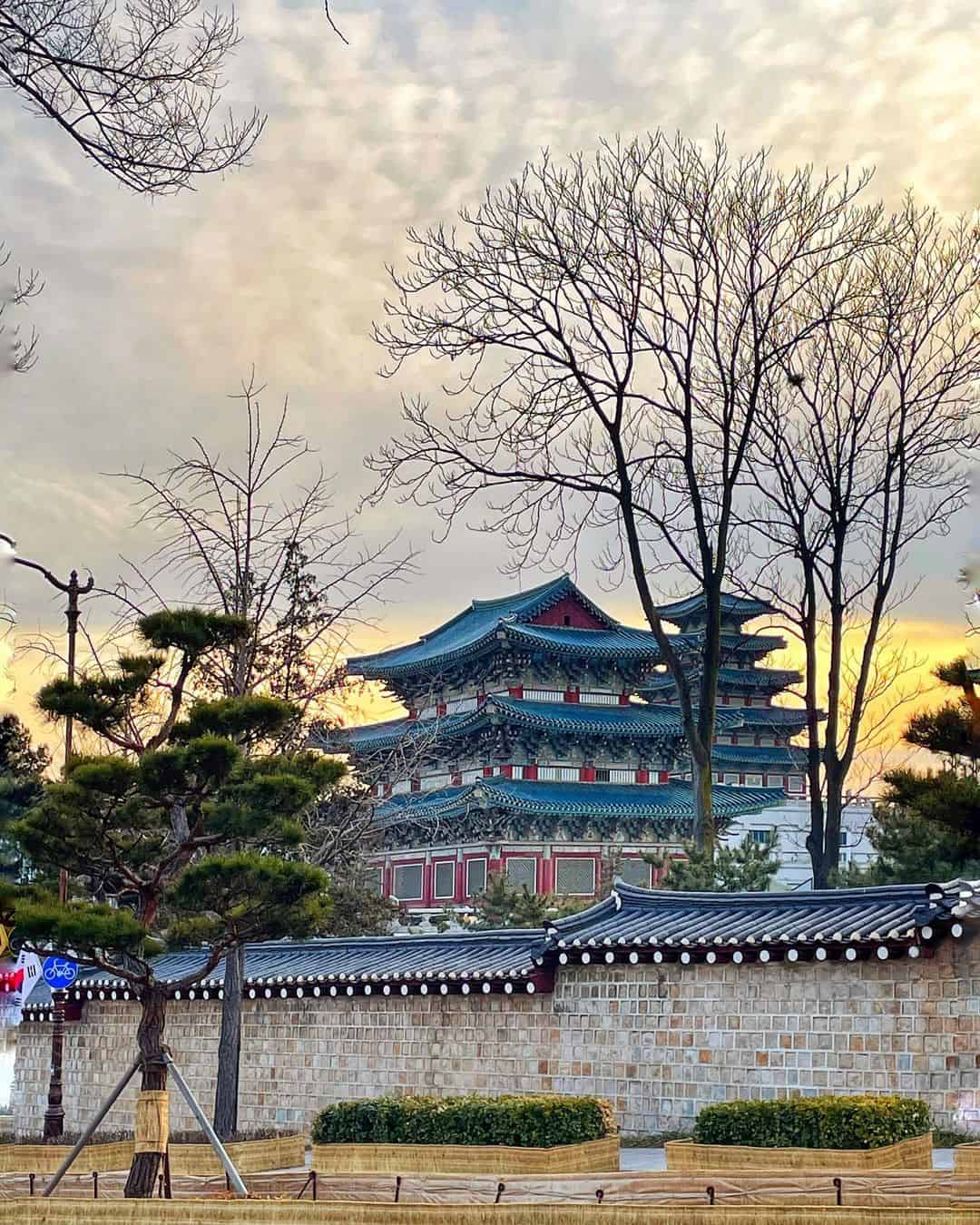
You can catch a spectacular changing of the guards’ ceremony outside of Gyeongbokgung palace every day at 11 am. The palace, built in 1395, was the main royal palace of the Joseon dynasty.
Spend a little time exploring the beautiful grounds of Gyeongbokgung while you’re here and don’t miss the free folk museum. Nearby, stop for lunch at Tosokchon (5 Jahamun-ro 5-gil, Jongno-gu).
This famous restaurant has captured the hearts of countless Koreans and travelers alike. It was a favorite dining spot for the late Korean President Roo Moo-Hyun.
Tosokchon is famous for its samgyetang – a whole chicken stuffed with garlic, rice, jujube, and ginseng. The eatery itself is charming.
Dining here is traditional Korean style. In other words, you will be asked to remove your shoes before you enter the restaurant. Then, you dine from a futon and a small table.
Spend an afternoon in Insadong
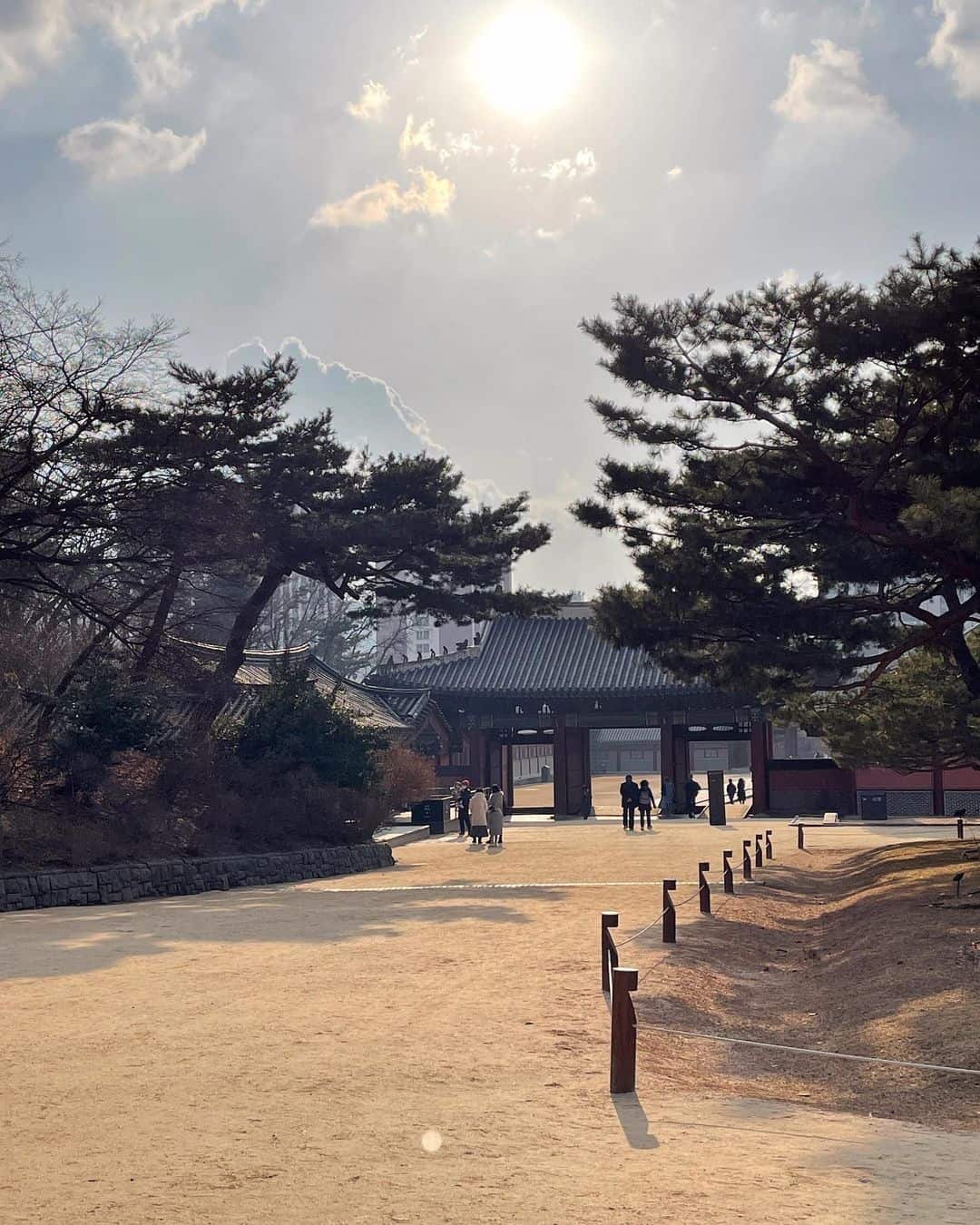
After lunch, take a tour of the beautiful secret gardens at Changdeokgong palace. Then, spend the afternoon exploring Insadong at a leisurely pace.
This popular historic neighborhood is situated in the Jongno-gu district of Northern Seoul. It is best known for its traditional teahouses and modern art galleries.
Window shop or pick up quirky souvenirs at Ssamziegil – a unique shopping complex that consists of more than 70 artisanal stores. Nearby, a nice place to stop for a pot of tea and a slice of cake is a quaint cafe called the Moon Bird Only Thinks of the Moon (달새는달만생각한다).
Order yourself a pot of omija tea (five berry tea) and a side of yakgwa (traditional Korean sweets) to complement the tea! Changgyeonggung, Gyeonghuigung (Western Palace), and Deoksugung palaces are worth visiting while you are in the area.
However, if you prefer museums, the National Palace Museum and the National Folk Museum of Korea within the Palace contain very interesting exhibits. When night falls, head to Gwangjang market, pull up a seat beneath a pojangmacha tent and enjoy Korean street food and soju.
Day Two: Myeongdong, Dongdaemun and Namsan
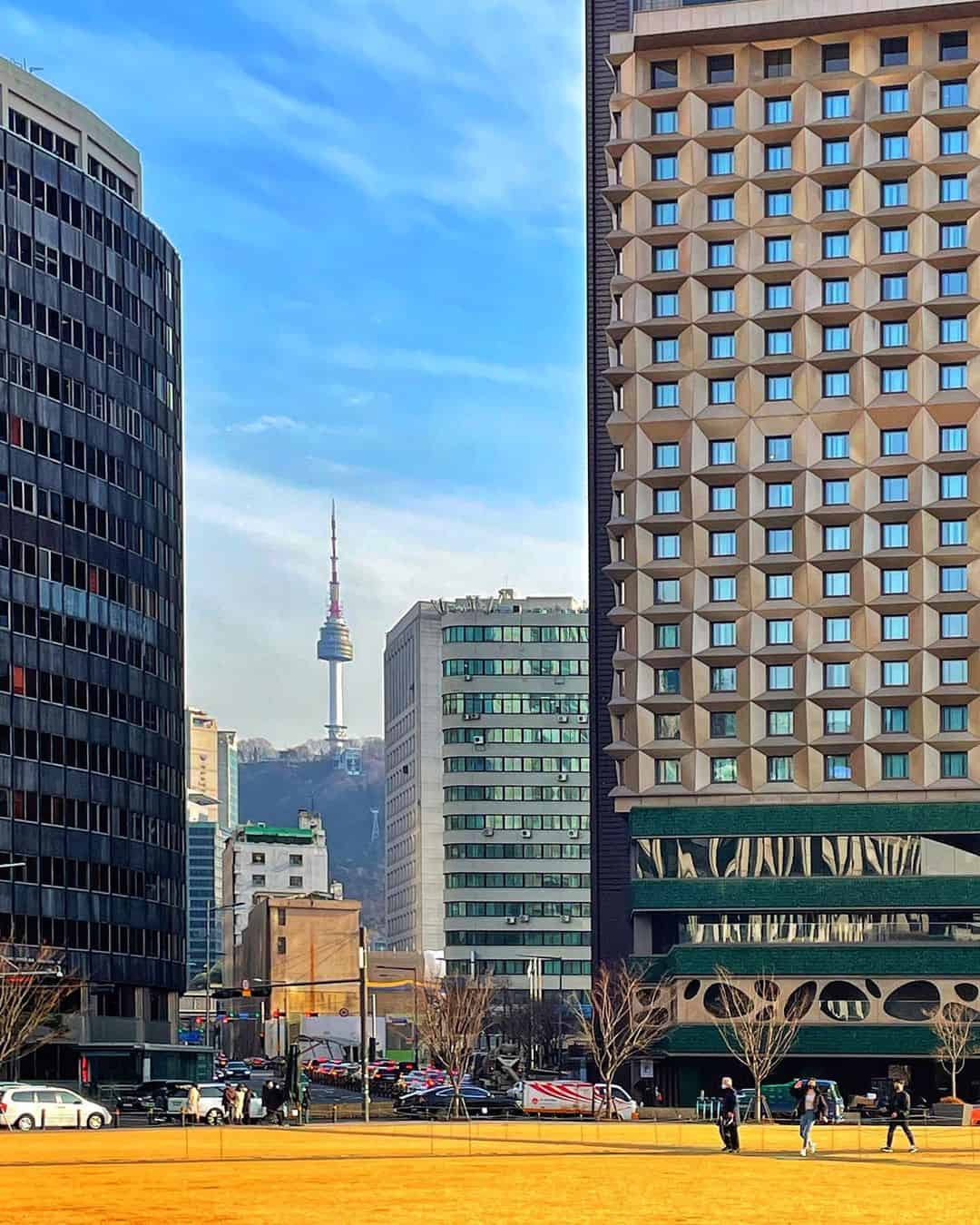
Myeongdong is essentially the main shopping district in Seoul. You can find everything here from high-end stores to high street brands.
It is also worth noting that all of the stores here are tax-free for international visitors. If you are interested in picking up Korean cosmetics and skincare products, this is the place to venture.
Every other store here is an Innis Free, a Nature Republic, or an Etude House. If you are not interested in shopping, Myeongdong is still a must-visit.
The street is lined with food stalls selling all manner of obscure creations. There are Turkish ice cream vendors that put on theatrical performances every time they prepare a cone.
Then, there are stalls selling torpedo potatoes and 32cm high ice cream cones that make for a photo opportunity in themselves. A lot of culinary schools are located in and around Myeongdong – perfect if you want to take a Korean cooking class or learn how to make kimchi.
Dongdaemun and Gwanghwamun
From Myeongdong, continue on to Dongdaemun. Here, you can have brunch in trendy Seongdong-gu – a former industrial area that borders Dongdaemun and has quickly become Seoul’s latest hipster hangout spot.
Take a stroll along the Cheonggyecheon – a manmade stream that runs through Seoul and eventually merges into the Han River. Then, stop for lunch at Gwanghwamun Jip (12 Saemunan-ro 5-gil, Jongno-gu) a tiny, hole-in-the-wall-style restaurant that is the size of someone’s living room.
There is only one dish on the menu here: delicious kimchi jiggae. The owner has won so many awards and media mentions for her recipe that many Koreans believe this is the absolute best place to try it in the country.
Mount Namsan
Mount Namsan provides a tranquil, green oasis in the heart of an otherwise bustling megalopolis. From the top, you have unparalleled 360-degree views of Seoul’s skyline.
There are several charming walking trails around the park, with excellent viewpoints all along the incline. It is also possible to take a cable car to the top if you don’t feel like hiking.
In the evening, grab dinner and drinks in trendy Gangnam. Some of the best restaurants in Seoul can be found here, especially if you have an affinity for fusion cuisine or fine dining.
Day Three: Gangnam, Hangang River and Mapo
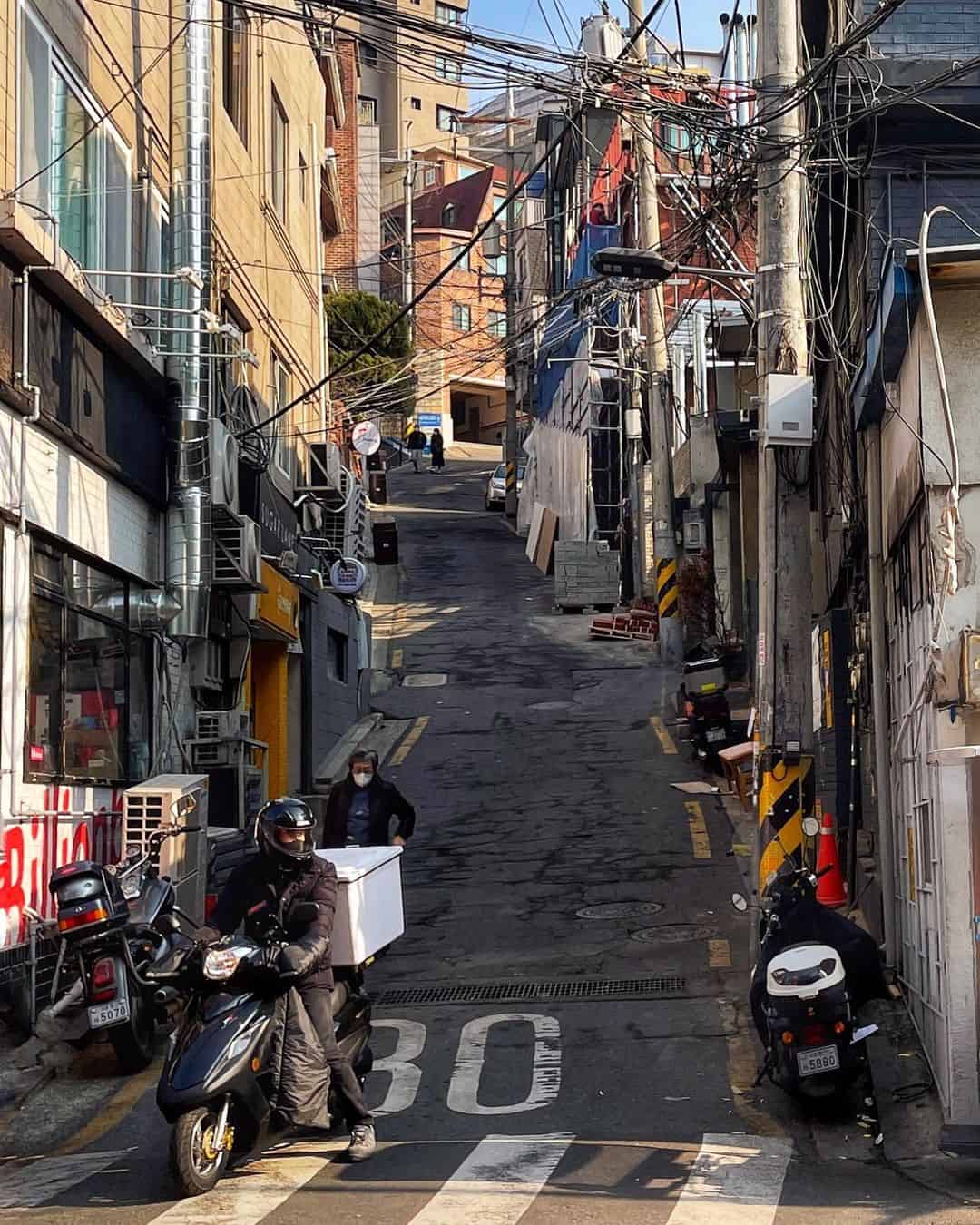
Start your day with a coffee and a pastry at one of the many charming coffee shops in Seoul. Then, head to Hyehwa Station.
Ihwa Mural Art Village
From here, follow the signs to Ihwa mural village. Ihwa Mural Art village is one of the many “moon villages” in Korea.
These were less than desirable neighborhoods (read: slums) that became incredibly rundown and neglected. The Korean Ministry of Culture encouraged a beautification initiative in 2006.
During this time, over 70 artists came together to create outdoor contemporary art installations, or to create stunning murals. The locals too, took to the streets to paint their homes.
There are plenty of cute cafes in this area and it is a popular first date spot for Koreans. Ihwa is a must-see on any Korea itinerary.
From Ihwa, you can visit the campus of Ewha women’s university, and all of the charming apparel stores nearby. Many of these independent boutiques sell one-of-a-kind pieces that no one else will have.
You can also continue walking onwards to Bongwonsa temple, on the slopes of Ahn mountain. There are several pleasant walking trails in this area with alternative viewpoints over Seoul.
The Hangang River
The Han River runs through Seoul and essentially divides the Korean capital into two. There are pedestrian and cycle tracks that run alongside the water, making the river a pleasant place to walk or cycle.
You don’t have to walk or bike in its entirety by any means. Exploring just a small section is enjoyable.
There are also 12 hangang river parks scattered throughout Seoul. They make a pleasant place to take a picnic to enjoy against the backdrop of the Korean capital’s dramatic skyline.
Where to Stay in Seoul
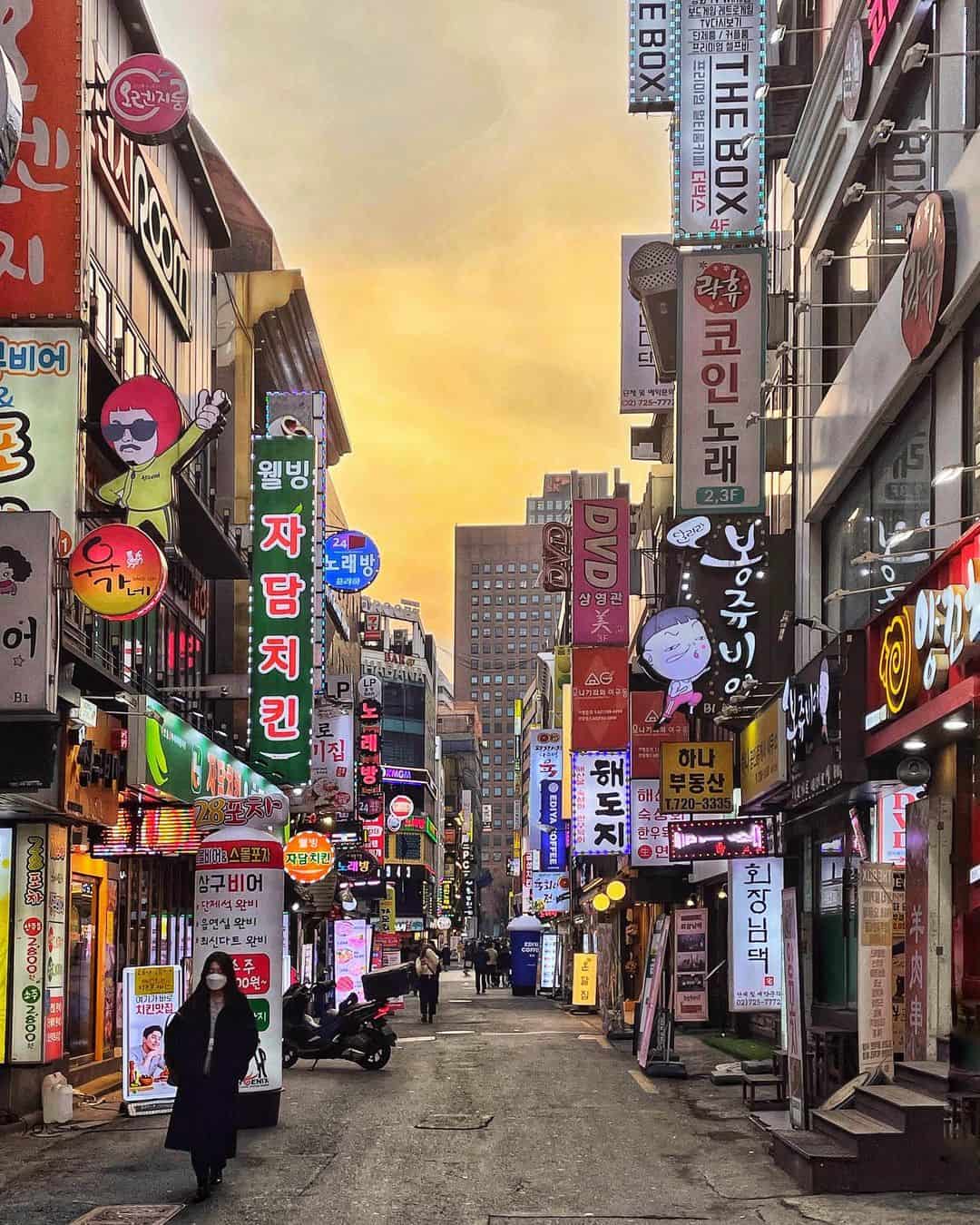
Seoul has accommodation options for every budget and travel style. Everyone from backpackers to luxe travelers will find something to perfectly suit them.
- Sun-Bee Hotel, Insadong
- Aloft Seoul Gangnam
- Metro Hotel Myeongdong
Recommended Seoul Tours
Opting to do a guided tour in a new city can really help you to get your bearings when you first arrive. Themed tours like food tours or haunted Seoul tours can help you to uncover areas of the city that you may never have found independently.
Better yet, touring with a local guide means that you have a Seoul expert on hand. You can ask them for their recommendations on the best places to eat, drink, and hang out during your Korea itinerary.
A number of reputable tours are detailed below for your consideration.
- Seoul: Gwangjang market and fortress wall tour with food tastings
- Korean cooking class at a local home and market tour
- Noryjangin fish market and historical park tour
- 4 hour walking Gangnam tour
- Seoul: dark side of the city and ghost stories walking tour
- Private Seoul tour with a local
- Seoul: Gyeongbokgung palace, Jogyesa temple and Cheongwadae
The Korean DMZ & JSA (Day 4)
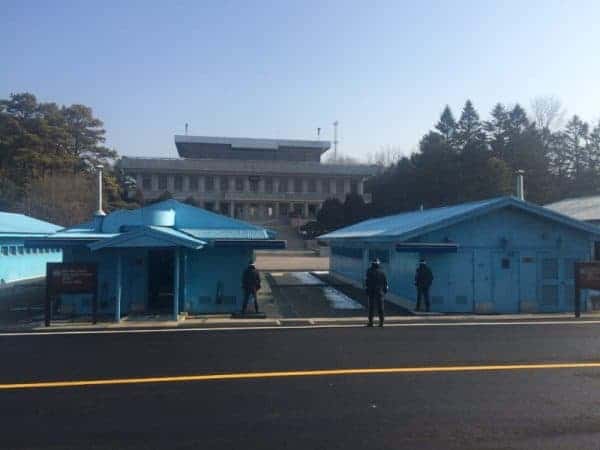
North and South Korea may be two separate countries today. However, prior to 1945, there was only one Korea.
Today, the two nations are separated by a land border. This is the Korean DMZ (demilitarized zone).
It sits just 50km north of Seoul and is the most heavily fortified border in the world. Peculiarly, it is also Korea’s most popular tourist attraction.
You only have to head ten minutes north of Seoul for the scenery to change dramatically. Just north of the capital, there are military outposts stationed every few hundred yards along the road.
Barbed wire fences cordon off large bodies of water to prevent infiltration to Seoul by North Korean spies. A visit to the Korean border is a fascinating (and heartbreaking) insight into a nation divided.
There are numerous tour companies that run excursions here. Try to opt for a tour that includes the JSA (Joint Security Area).
The JSA is the border section where North and South Korean forces stand face to face, constantly monitoring their enemy in an eerie silence. There are several notable points of interest along the Korean border, not just restricted to the JSA.
You will also visit Imjingak – a charming border town where South Koreans pray to shrines in the hope of one day being reunited with their loved ones to the north. At Dora Observatory, you can peer into North Korea through binoculars and see all sorts of obscure activity across the border.
Korean Border Tours
You should note that you cannot visit the Korean border independently. You must travel here on an organized tour.
Reservations must be made in advance. A number of reputable tour options are detailed below. All tours depart from Seoul and include pick-up and drop-off from your hotel.
- DMZ half & full day tours
- Imjingak & Paju: Two Koreas full day tour from Seoul
- From Seoul: day trip to DMZ, cable cars, and battleship park
Beopjusa Temple Stay, Mount Songnisan (Day 5)
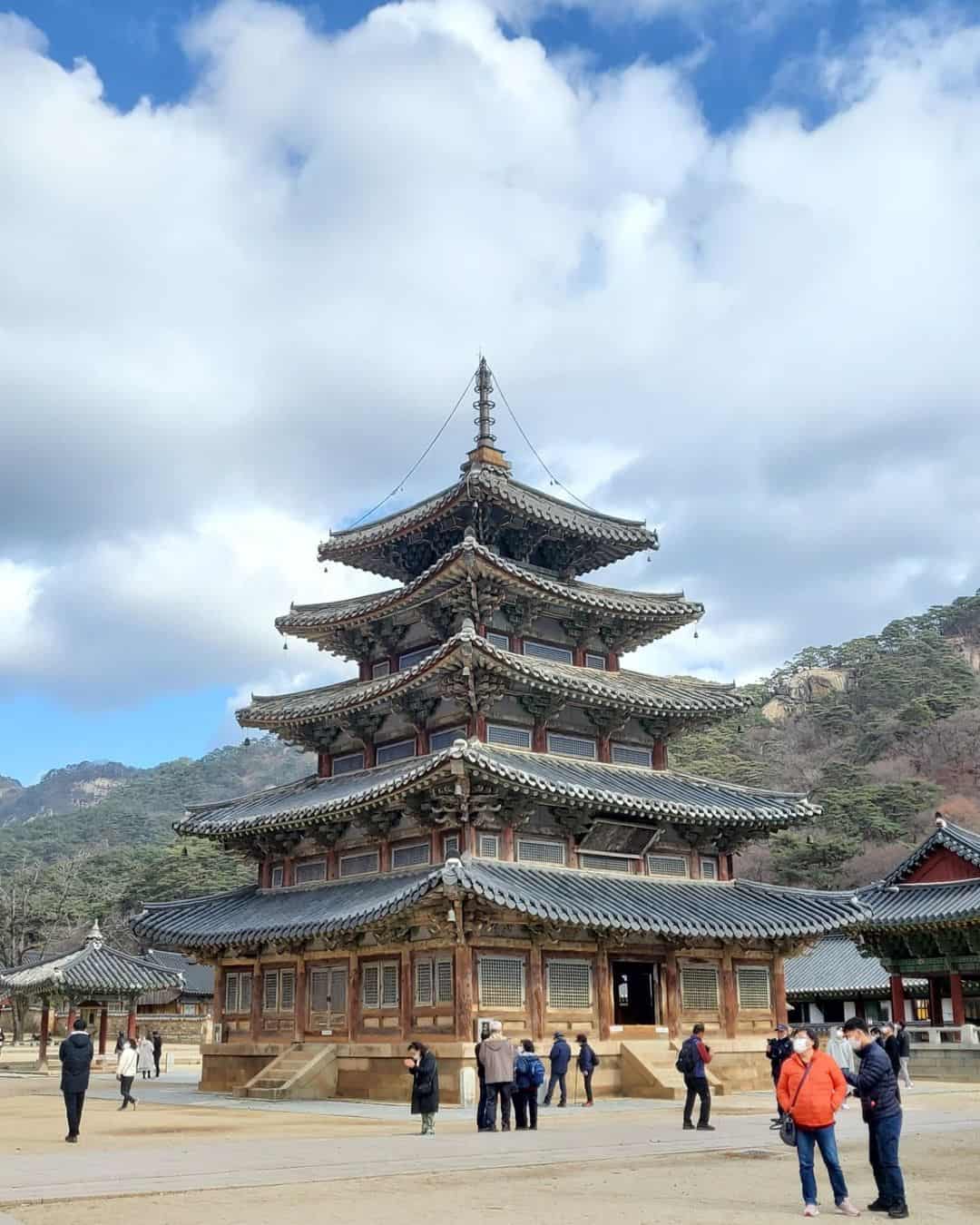
The Korean Temple Stay program is an initiative that intends to teach international travelers about Korean Buddhist traditions. You do not have to be religious to participate.
For one day and one night, you can live at the temple and shadow the monks that inhabit it. This is a magical glimpse into monastic life that is typically so secretive and mysterious.
Your temple stay itinerary will include numerous activities that monks complete on a daily basis. For instance, 108 prostrations (ouch), traditional tea ceremonies, and daily chanting and drumming.
Dozens of temples across South Korea participate in the temple stay program, including temples in Seoul and Busan. However, the Beopjusa temple at Mount Songnisan is a great, scenic choice.
Beopjusa Temple
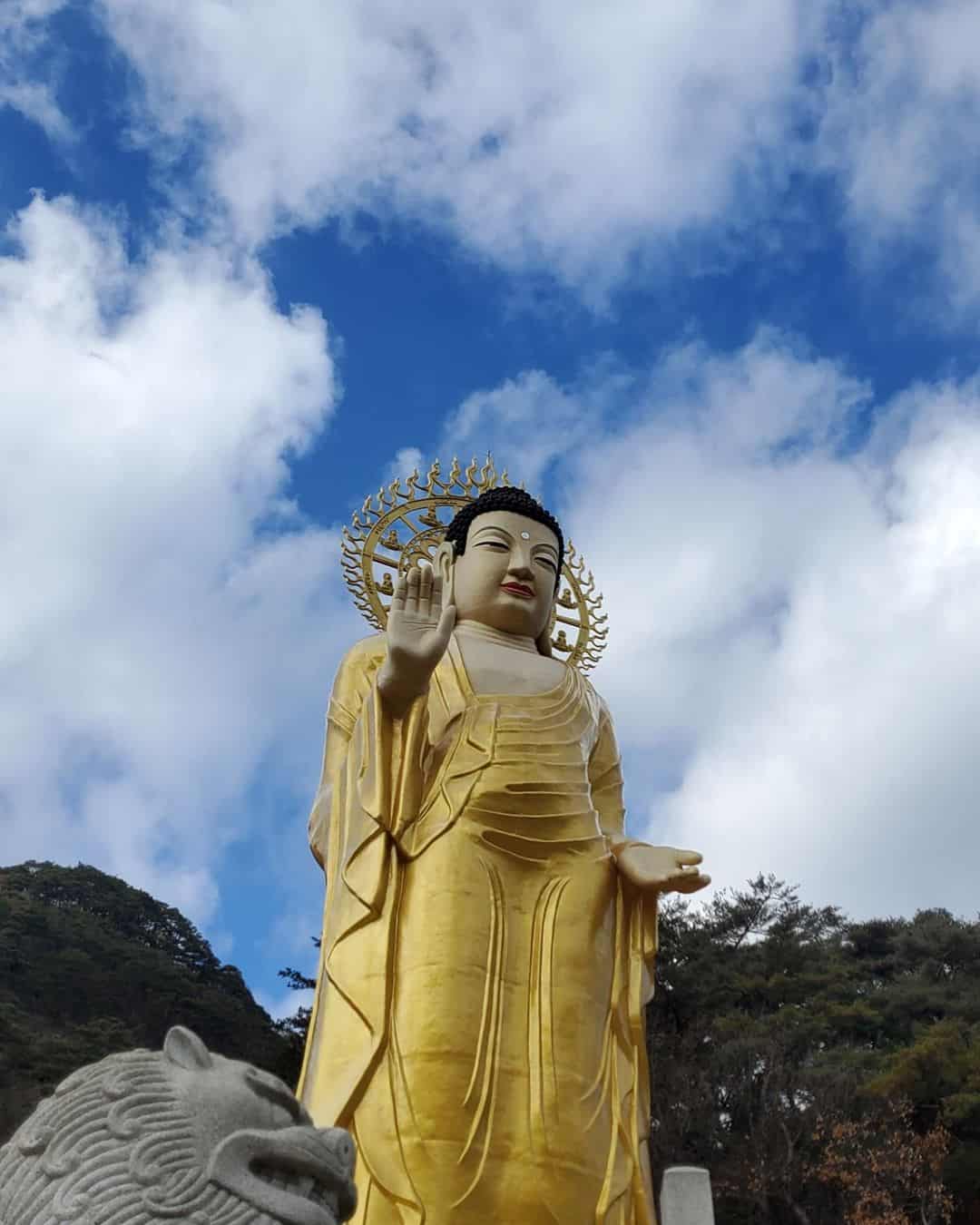
The temple sits on the slopes of the beautiful Mount Songnisan, surrounded by tranquil woodland, streams, and hiking trails. It is one of the head temples of the Jogye Order of Buddhism, and one of the most important temples in Korea.
Beopjusa temple staff, volunteers, and monks tend to have a good level of English. The accommodation is comfortable here too.
You have your own private wooden cabin with a bathroom, tea-making facilities, and a futon bed. You can read more about the Korean temple stay program here.
How to Get to Beopjusa Temple, Mount Songnisan
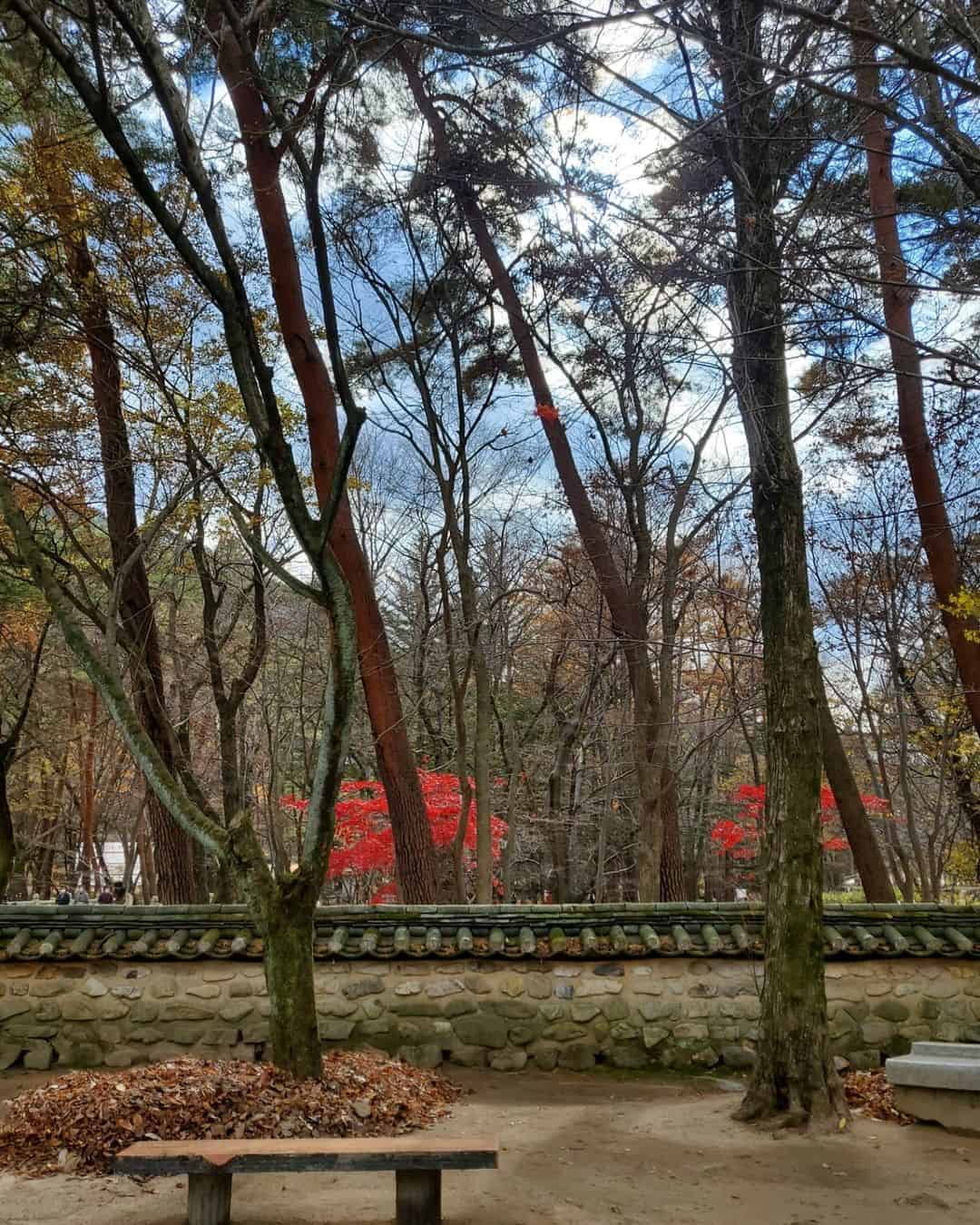
It is easy to get to Beopjusa Temple from Seoul. Simply take the bus to Songnisan from Seoul bus station and get off at the last stop.
The temple is situated within Songnisan National Park, approximately a 20 minute walk away from the bus terminal. If you have luggage, you can take a taxi from outside the bus terminal for a few thousand won.
Jeonju (Days 6 & 7)
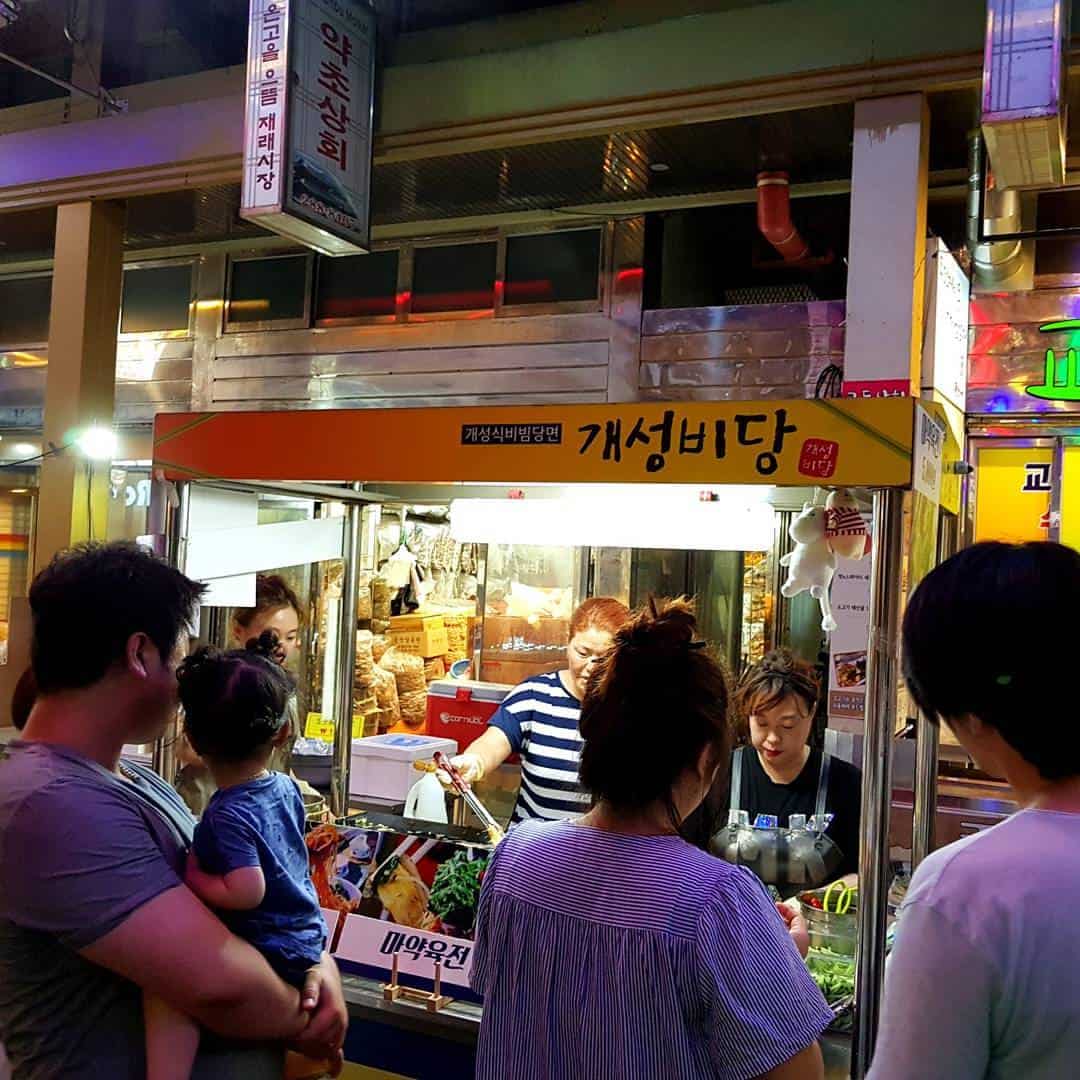
Jeonju is a foodie paradise and a highlight of any South Korea itinerary. This is Korea´s UNESCO-protected city of gastronomy.
Jeonju is a popular weekend getaway destination for Koreans. However, most foreigners have never even heard of it, bar those living in Korea and teaching English.
One of the major tourist attractions here is the large and incredibly well-preserved Hanok Maeul. This is an ancient village once occupied by Korean nobles.
Equally interesting are Jeonju’s countless street food markets. Don’t miss the Nambu night market.
Here, vendors from across Asia come together to prepare some of the most mouthwatering international dishes. Be sure to experiment with local delicacies such as Jeonju bibimbap (beef rice hotpot) and Moju (모주), traditional spiced alcohol.
Jeonju Highlights
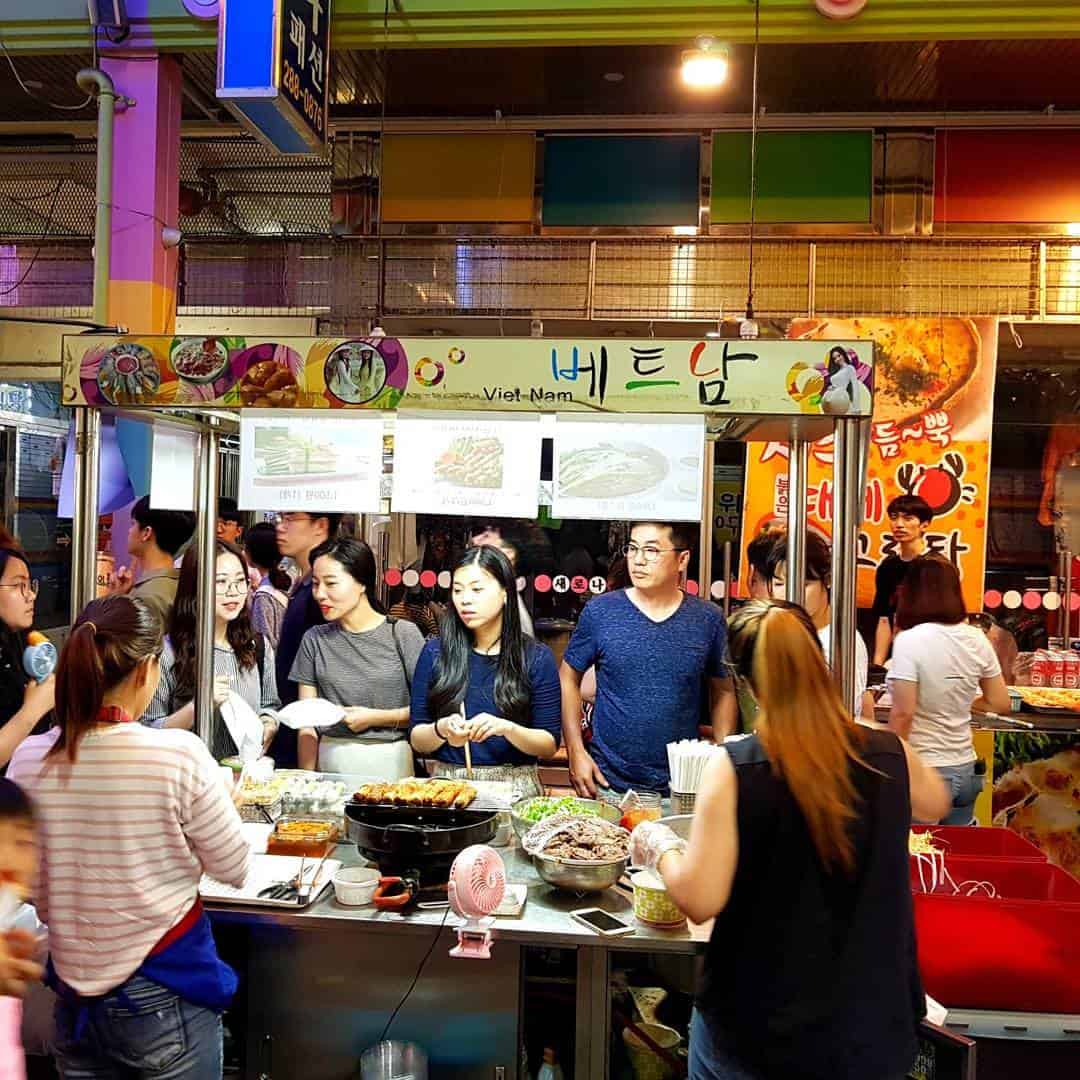
- Sample Korean street food at the vibrant Nambu night market
- Rent a Korean hanbok (traditional dress) and explore dressed as a royal
- Check out the Gyeonggijeon Shrine and its photogenic bamboo forest
- Visit a Makgeolli house and try local makgeolli (Korean rice wine) with a plethora of free Korean side dishes (¨banchan¨)
- Admire murals and street art at the Jeonju Jaman village
- Enjoy breathtaking 360 degree views of the city from the Omokdae shrine
- Marvel at the nighttime illuminations of Pungnammun gate
Where to Stay in Jeonju
Jeonju city is essentially divided into two halves – the new town and the old town. The latter is where most points of interest are located and subsequently, where you are going to be spending most of your time.
Opt to stay in the heart of old Jeonju. This way you are within walking distance of all of the city´s main sights and restaurants.
- Hanok Story Guesthouse
- Gingko Tree guesthouse
Getting to Jeonju
It is easy to get to Jeonju from Songnisan. You can take the bus from Songnisan station. Depending on your departure time, you may be able to get a direct bus or you may have to change in Daejeon.
Gyeongju (Days 8 & 9)

Visiting Gyeongju is like stepping back in time. The city has a history that dates back over 2,000 years.
Gyeongju was the capital of the Silla dynasty. Once upon a time, this was the wealthiest region in Korea.
Today, Gyeongju is one of the few places in Korea whose historical and archaeological sites were not largely destroyed during the Korean war. Many ancient temples, tombs, and shrines here are incredibly well preserved.
There are so many historic places scattered around little Gyeongju that the city is affectionately nicknamed “The Museum without walls”. This is for good reason. Every turn greets you with a new historical site.
Arriving in Gyeongju makes a refreshing change from the other big cities of Korea. Here, there are no towering apartment complexes or commercial office buildings.
Instead, Gyeongju boasts traditional houses and rolling green hills that extend as far as the eye can see. Two days of your Korea itinerary are perfect to get beneath the surface of Gyeongju.
Gyeongju Highlights
- Watch Buddhist monks chant and perform rituals at Bulguksa temple
- Hike from Bulguksa to Seokgurum grotto – home to a towering granite Buddha statue that dates back to 751 AD
- Taste the famous ¨Gyeongju bread¨ – sweet pastry stuffed with red bean filling
- Take a pleasant stroll around Donggung Palace and its Wolji Pond
- Explore the royal tombs from the Silla period at Dae Reung Won complex
- Rent on a bicycle and cycle through the countryside to hidden shrines and temples
- Sip delicious omija tea and eat yakgwa sweets at the old tearooms of Gyochon Village
Where to Stay in Gyeongju
- Namuae Gwangju hanok hotel
- Commodore hotel Gyeongju
Busan (Days 10 & 11)
The beautiful coastal city of Busan is Korea’s second city. It is home to gorgeous beaches and a vibrant nightlife scene.
Busan is a city of contrasts. One moment you are strolling along tree-lined promenades enjoying the ambiance of chic, upscale eateries and tented bars.
Next, you are negotiating with vendors at traditional Korean street food markets. During the hot, humid summer months, the beaches and coastal areas of Busan provide a welcome respite from the heat.
Busan Highlights
- Search for street art at Gamcheon Culture Village – one of Korea’s biggest tourist attractions
- Swim, snorkel and relax and Haeundae beach
- Shop for handicrafts, knick knacks and souvenirs at the Haeundae beach markets
- Watch street vendors haggle ferociously with local fishermen at Jagalchi fish market
- Admire the dramatic setting of the clifftop Headung Yonggunsa temple
- Visit Tongdosa – the largest temple in Korea
Where to Stay in Busan
- Grand Josun Busan
- Haeundae Marianne Hotel
- Arban Hotel
Getting to Busan from Gyeongju
It is easy to get to Busan from Gyeongju. Buses depart from Gyeongju station regularly and take just 40 minutes.
Recommended Busan Tours
- Busan: Full-day city tour
- 90 minute afternoon sightseeing cruise
- Busan pub crawl
- From Busan: daytrip to Oedo island or Tongyeong
- Busan private tour with a local
- Busan: traditional Korean food cooking class
Jeju (Days 12 – 14)
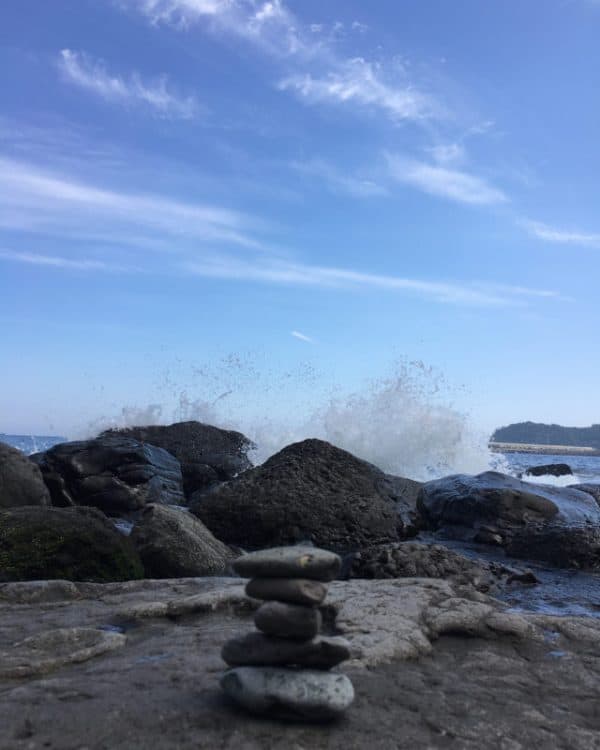
Spending a couple of days in Jeju is a perfect way to round up your South Korea itinerary. Korea is not really associated with nature.
You don’t think of Korea and automatically think of majestic waterfalls, secluded paradisiacal beaches, crystal clear cerulean waters, and pristine nature. However, Jeju is exactly that.
This little island is a tropical paradise and it is often referred to as being the ¨Hawaii of Korea¨. The island is so stunning that it was recognized as being one of the new 7 world wonders of nature.
Jeju Highlights
- Meet the world famous Haenyeo fisherwomen that dive into the sea and catch fish by hand
- Make your own Korean skincare products at the InnisFree factory
- Sample ¨black pig¨ – specialty Jeju pork marinated and barbequed
- Revel in the scenery of Jeongbang and Cheonjeyeon waterfalls
- Tread the Yongmeori coastline
- Hike to the peak of Sanbangsan Mountain
Where to Stay in Jeju
It can be overwhelming to figure out which area of Jeju island to stay in. This is particularly the case if you are only here for a few days as part of a wider South Korea travel itinerary.
Opting to stay in Jeju city means that you are closer to the airport, the ferry port, and public transport links. However, an arguably better base is Seogwipo (서귀포시). Here you are close to many of the island´s notable attractions.
- Golden Tulip Jeju Seongsan hotel
- Brown Suites hotel and resort
- Grand Mer hotel Jeju
Ending your South Korea itinerary
It is inexpensive to fly from Jeju to Seoul or Busan. Depending on where your onward travels take you from Korea, you can depart via Seoul or Busan airport.
Busan’s Gimhae international airport is a great choice for organizing budget flights to other destinations in Asia. However, Seoul Incheon is Korea´s main airport and offers a wider selection of international and long-haul flights.
Alternative South Korea Travel Itinerary Ideas
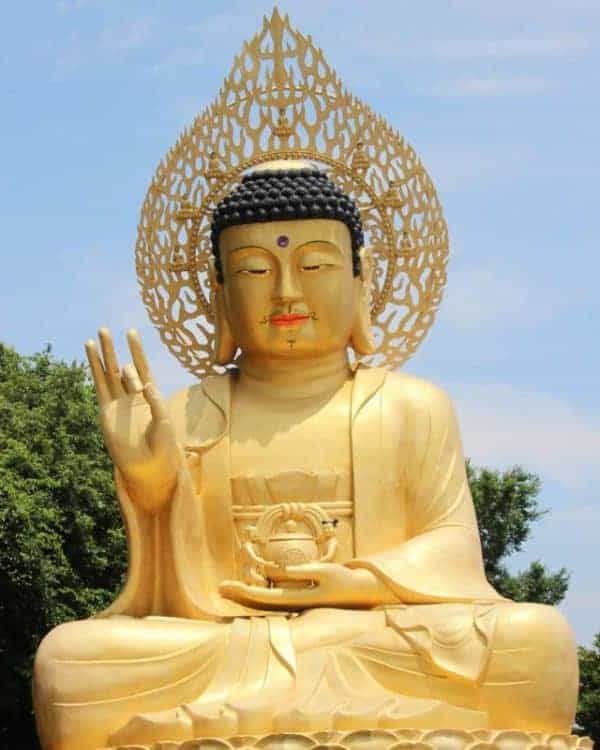
This two-week South Korea itinerary takes you across the country in a relatively short period of time. But what if you don’t have two weeks to spend in Korea?
Perhaps you are only planning on passing through briefly as part of a wider Asia adventure. Alternative South Korea travel itinerary ideas are provided below.
Additional Destinations to Consider
- Suwon – home to the famous Hwaseong fortress and numerous interesting markets
- Ansan – Multicultural city outside of Seoul known for food markets and restaurants
- Suncheon – South Korea´s ¨eco¨ city, known for nature and outdoor activities
- Boseong – Picturesque green tea plantation
- Damyang – Breathtaking natural area by woodlands, parks, and bamboo forests
- Sokcho – Quaint coastal town known for excellent seafood
- Seoraksan – South Korea´s best-loved national park
South Korea Itinerary FAQs
Drafting out your South Korea travel itinerary can be daunting – particularly if this is your first time traveling in the Far East. A number of things to consider when organizing your trip are detailed below.
When to travel to South Korea
Temperatures and conditions in South Korea vary dramatically from month to month. Korea experiences hot, humid summers with monsoon-like rains, and harsh winters.
The best time to travel to Korea is arguably the springtime (March to May) or Autumn (September to early November). Spring in Korea is particularly pleasant.
At this time, you can expect temperatures of around 20-25 degrees celsius. Spring is also the cherry blossom season in Korea and the cities are decorated pink with fragrant flower blossoms.
September and October boast similar temperatures to the spring. The fall foliage is particularly gorgeous. At this time, the leaves on the trees start to fall and the cities and countryside of Korea are decorated in hues of orange and auburn.
Visa and entry requirements for South Korea
Residents of over 107 countries can enjoy visa-free travel to South Korea. This includes UK and US citizens.
Check the specific entry and visa requirements for your country here. British and American citizens can stay in Korea for up to 90 days visa-free.
Some nationalities are required to obtain a Korean travel visa from a Korean embassy prior to departing from their home country. Check your local government travel advice before booking your trip.
Due to the ongoing global pandemic, only fully vaccinated travelers are permitted entry to South Korea at this time. If it has been more than 6 months since your latest dose of the vaccine, a booster is required.
You can find the UK government travel advice for South Korea here. The USA government travel advice is here.
Is Korea Safe?
The question of safety is always going to be on your mind when venturing to a new country and the same is likely true when you are planning your South Korea itinerary. Korea is indeed a very safe country.
The crime here is minimal to nonexistent, and the people are very polite and respectful. In fact, Korea is so safe that you will often see odd occurrences in public that you would never see anywhere else in the world.
For example, a shopkeeper leaving a shop and a cash register unattended with the door open as they quickly dash out to run an errand. Or alternatively, you may see people leaving their bags, expensive cameras, and wallets unattended in restaurants.
Why? Respect and manners are so deeply ingrained in the culture here.
To some Koreans, the concept of going to other countries and not being able to do the same is shocking. The country is very much a night owl and you will always find city streets crowded with people, any time of day, any time of the week.
So, while you should follow the same common-sense practices as you would anywhere else in the world, you never get a creepy feeling when exploring Korea. Even independent travelers and solo females will feel safe here.
Oh, and you don’t need to pay the nutty neighbor to the north any mind either, South Koreans never do. Life in South Korea goes on just like anywhere else in the world, and locals are not remotely concerned about the actions of the north.
Currency
Korean won is the national currency of South Korea. Currency conversions fluctuate, however, ₩1000 is roughly equal to $0.85USD
Do not exchange money upon arrival at Seoul Incheon Airport; the rates will not be competitive. For Koreans, South Korea is a cashless society.
However, foreign travelers will often find that their international debit and credit cards are not accepted. It is prudent to ensure that you always carry sufficient cash with you during your Korea itinerary. Keep in mind that your international card issuer may also charge you foreign transaction fees.
Korea itinerary trip budget
It is very possible to explore South Korea on a budget. Korea is more expensive than Southeast Asia. However, it is notably cheaper than nearby Japan and its other East Asian neighbors.
A mid-range guesthouse, hanok stay, or hotel room here costs between $40-60 per night. More budget options are available if you are happy to stay in capsule hotels or dormitory-style accommodation.
Dining out in Korea is relatively inexpensive. You can purchase filling, homely meals like bibimbap, ttukbaegi bulgogi (Korean beef soup), and other favorites for around ₩6000 – ₩8,000 per person.
Do I need travel insurance for South Korea?
It is prudent to purchase comprehensive travel insurance before your trip to Korea, just like with traveling anywhere. South Korea is a very safe country but of course, you never know what might happen.
Medical care in South Korea is expensive. At a minimum, you should ensure that you opt for a travel insurance plan that offers medical coverage up to $1 million.
Note that some sporting activities like hiking and skiing are sometimes not covered under a standard insurance plan. If you plan on incorporating these activities into your Korea itinerary then you should purchase coverage accordingly.
Getting around during your Korea itinerary
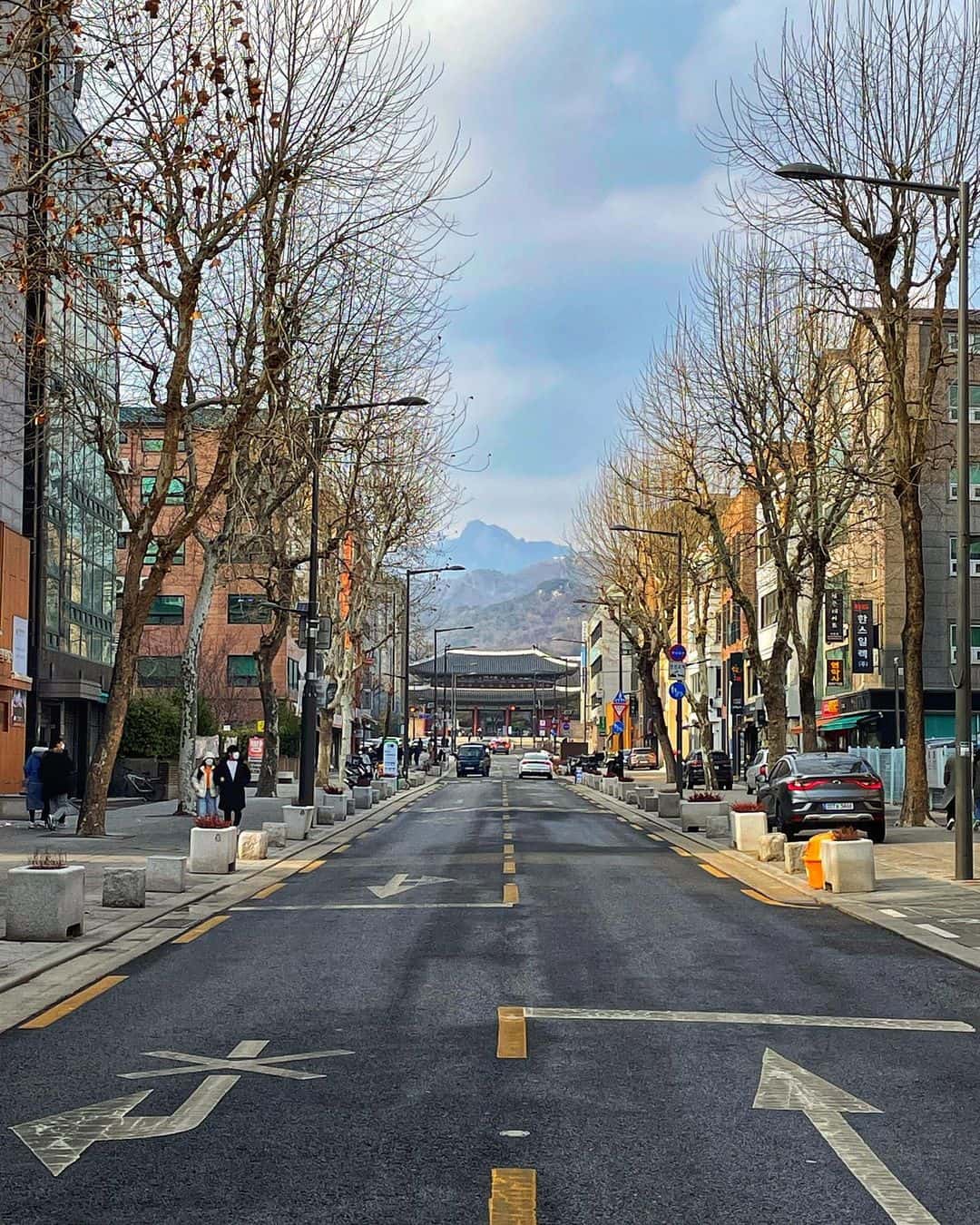
This South Korea itinerary can be done by public transport. Buses, trains, and metros in South Korea are excellent and run frequently, and on time.
Renting a car
Renting a car in South Korea is another option, and it certainly provides you with more flexibility in your schedule. Roads in Korea are safe, modern, and well-maintained.
You need to have an IDP (International Driver’s Permit) to rent a car in Korea. This will be checked along with your ID when you pick up your vehicle.
Seoul subway
Seoul and Busan both have comprehensive metro networks. Download the Subway Korea app so that you can check train schedules and fares.
The Seoul subway operates from 5.30 am – 24.00. Be sure to purchase a T Money card when you arrive.
The card costs 2500 won and can be picked up from any metro ticket machine. Having this card means lower fares on metros and buses.
Bus travel in Korea
Buses are the most convenient way of getting from A to B in Korea and they run on regular schedules. Korean coaches are modern, comfortable, and air-conditioned.
Depending on where you are traveling to, it is possible to take intercity or express buses. Intercity buses stop at various points along their routes. Meanwhile, express buses run non-stop until their destination.
The best place to check for information is the Korean Ko bus website which contains fares and ticket information on services. Buses in Korea are affordable. Even if you travel all the way from Seoul to Busan, your ticket will cost no more than $30.
Trains in Korea
Trains are a very comfortable and convenient way to get around during your Korea travel itinerary. However, it should be noted that Korean rail networks are not as comprehensive as bus networks.
You can check routes and fares on the Korail websitehere. If you plan on doing most of your travel by train, you can purchase a Korail pass to get discounts on travel.
Wifi and Mobile Phone Plans
South Korea might just be the best country in the world as far as free WiFi goes. Complimentary WiFi is available almost everywhere.
Restaurants, coffee shops, and stores all typically have free, non-password-protected WiFi. Free WiFi in Korea can even usually be found randomly in the streets and various neighborhoods
Prepaid Korean sim cards are an easy way for travelers to stay connected during their time in the country. Sim cards can be picked up at stores operated by Korean mobile phone providers at airports or convenience stores.
You may want to consider purchasing a 4G LTE Unlimited Data SIM Card to collect at the airport. You can reserve this in advance and simply show your receipt when you arrive at the airport.
The package provides you with unlimited data throughout your stay in Korea. Alternatively, you can head into a phone store and pick up a sim card, though you should be prepared to show some ID.
KT, LG, and SKT are among the main providers in South Korea. Sim cards are 10,000KRW.
Then, you can purchase credit to be used for calls, SMS, and data. You can top up your Korean sim by buying credit passes at convenience stores and phone shops.
It generally works out cheaper to purchase the 4G LTE Unlimited Data SIM Card to collect at the airport, particularly if you are going to be spending a few weeks in Korea. Otherwise, you will pay more to keep topping up your phone.
Korea Itinerary Essentials
What to pack for your South Korea itinerary varies wildly depending on when you travel. The country experiences mild spring and autumn months, hot, humid summers, and icy cold winters.
However, there are some essentials that you should take with you whenever you opt to travel. If you should happen to forget anything, you can always pick it up locally.
- A theft proof backpack or wallet for extra security
- A Korean travel adaptor – Korea uses sockets type C and F, 220V
- Packing cubes or compression bags to reduce your luggage size
- Selfie stick with tripod feet for taking photos with your cell phone
- DSLR camera and tripod for taking gorgeous travel photos
- Reusable period products such as period panties or a menstrual cup
- Travel medikit with your own prescription meds and preferred creams
- Korean phrasebook and guidebook
- Go pro and accessories for recording amazing videos
- A reusable water bottle to carry while sightseeing
Korea Itinerary Final Thoughts
Do you have any additional questions about heading off on a South Korea itinerary? Are you concerned about traveling to South Korea as a solo female, or anything else? I lived in South Korea for two years teaching English.
I am happy to assist with any questions you may have. You may also find this comprehensive Korea Travel guide useful.
Feel free to reach out to me via the comment box below. Safe travels!
Pin this Korea itinerary for later!
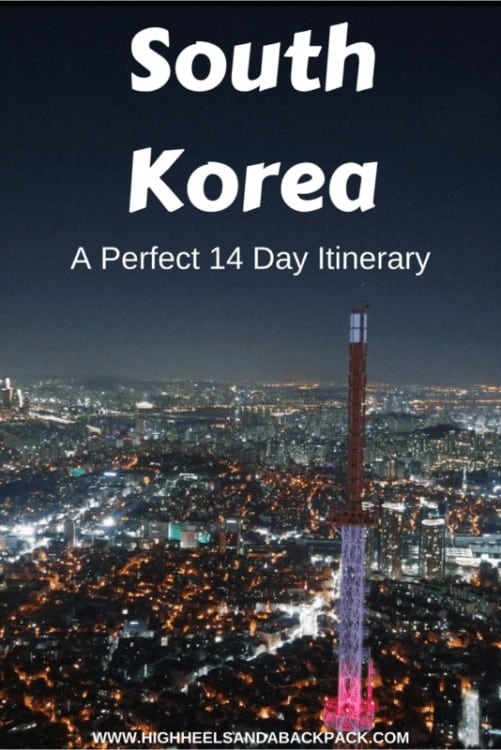
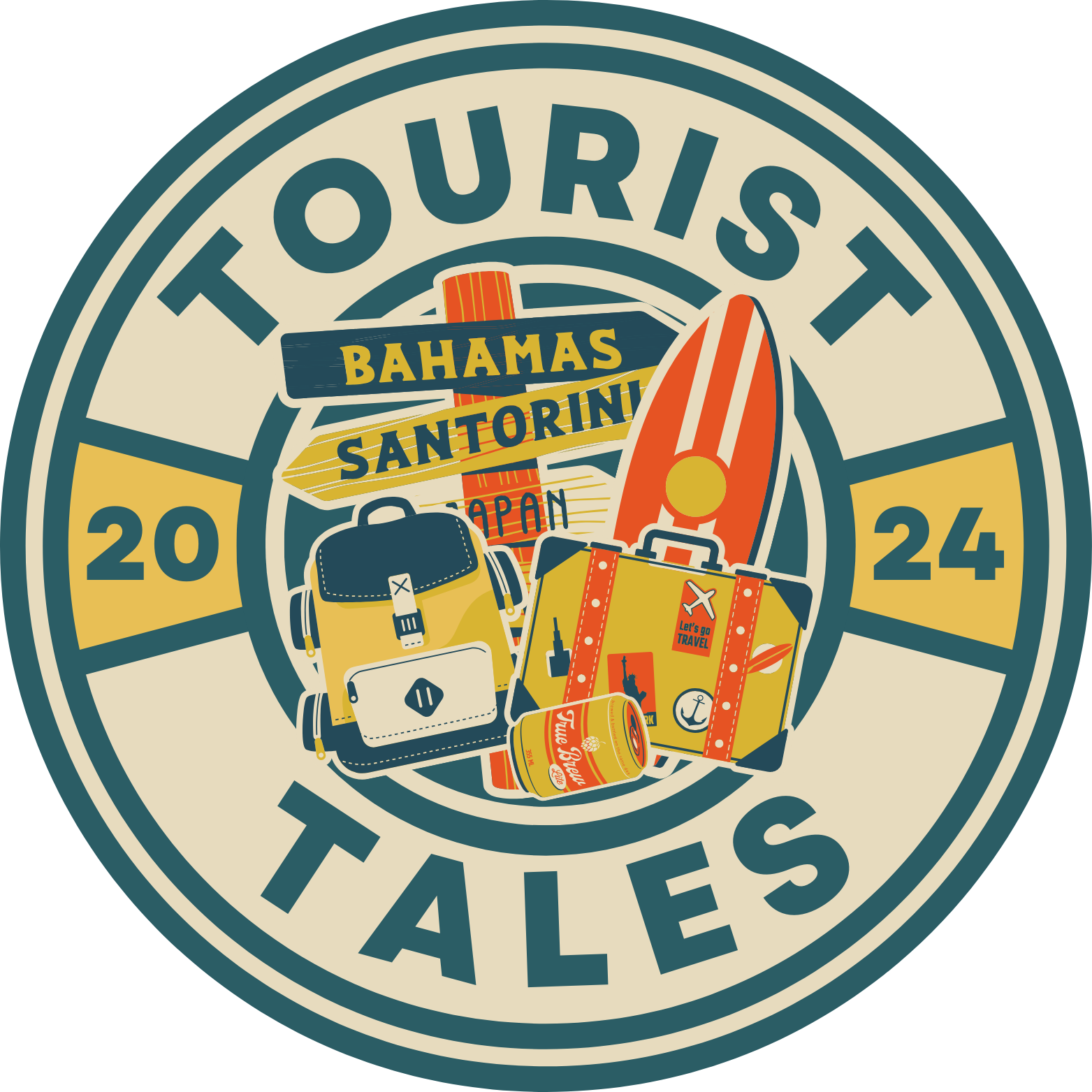
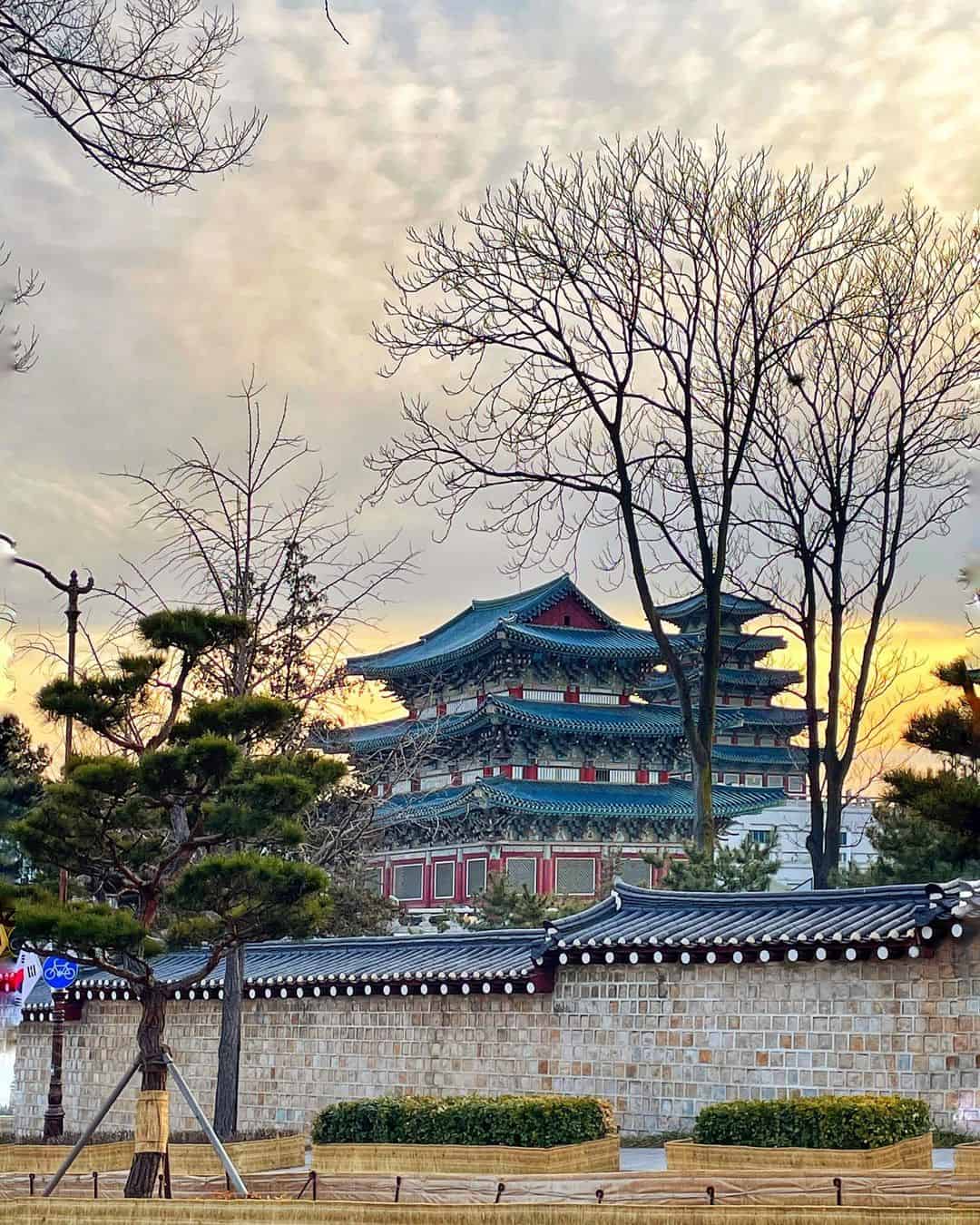
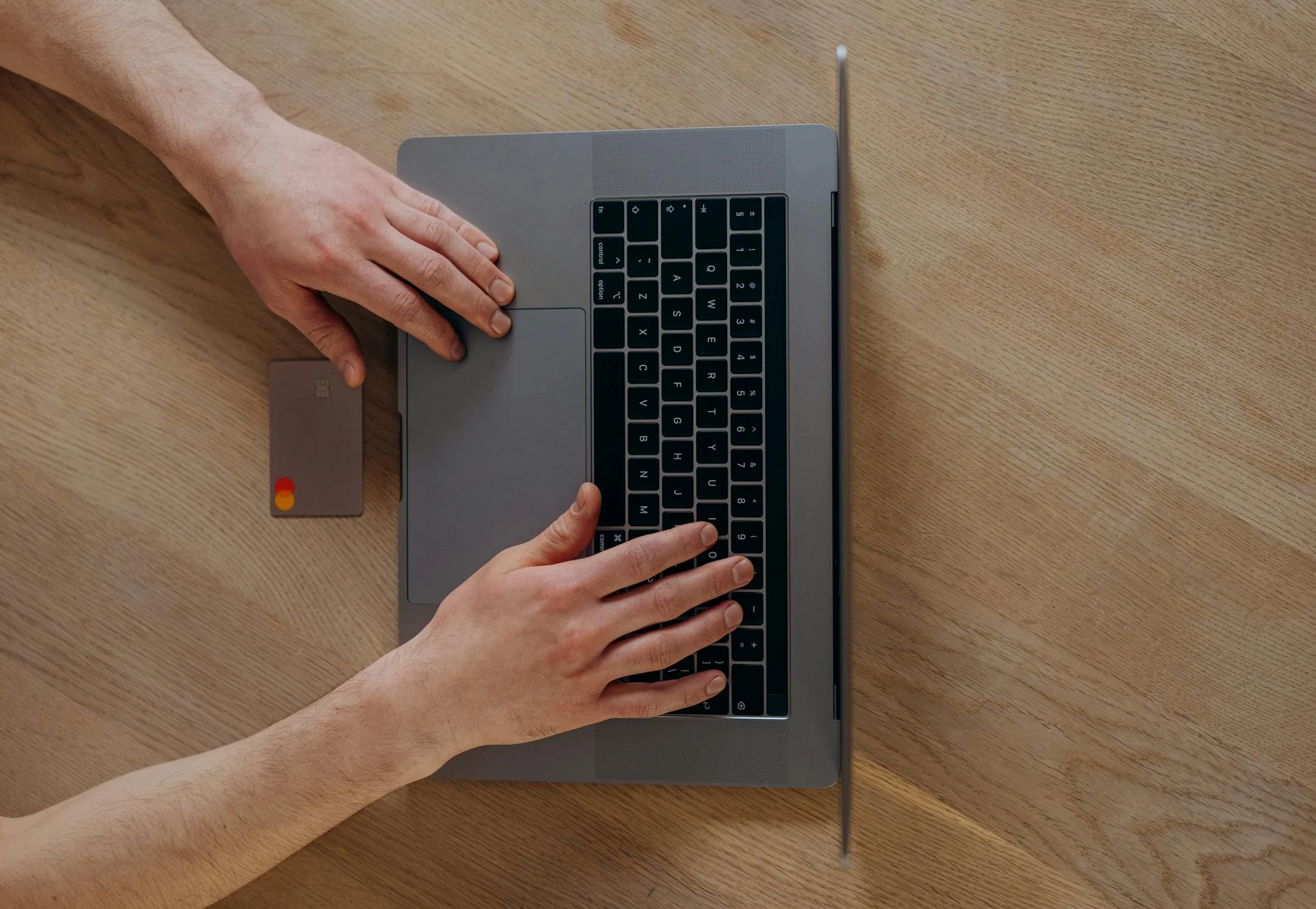
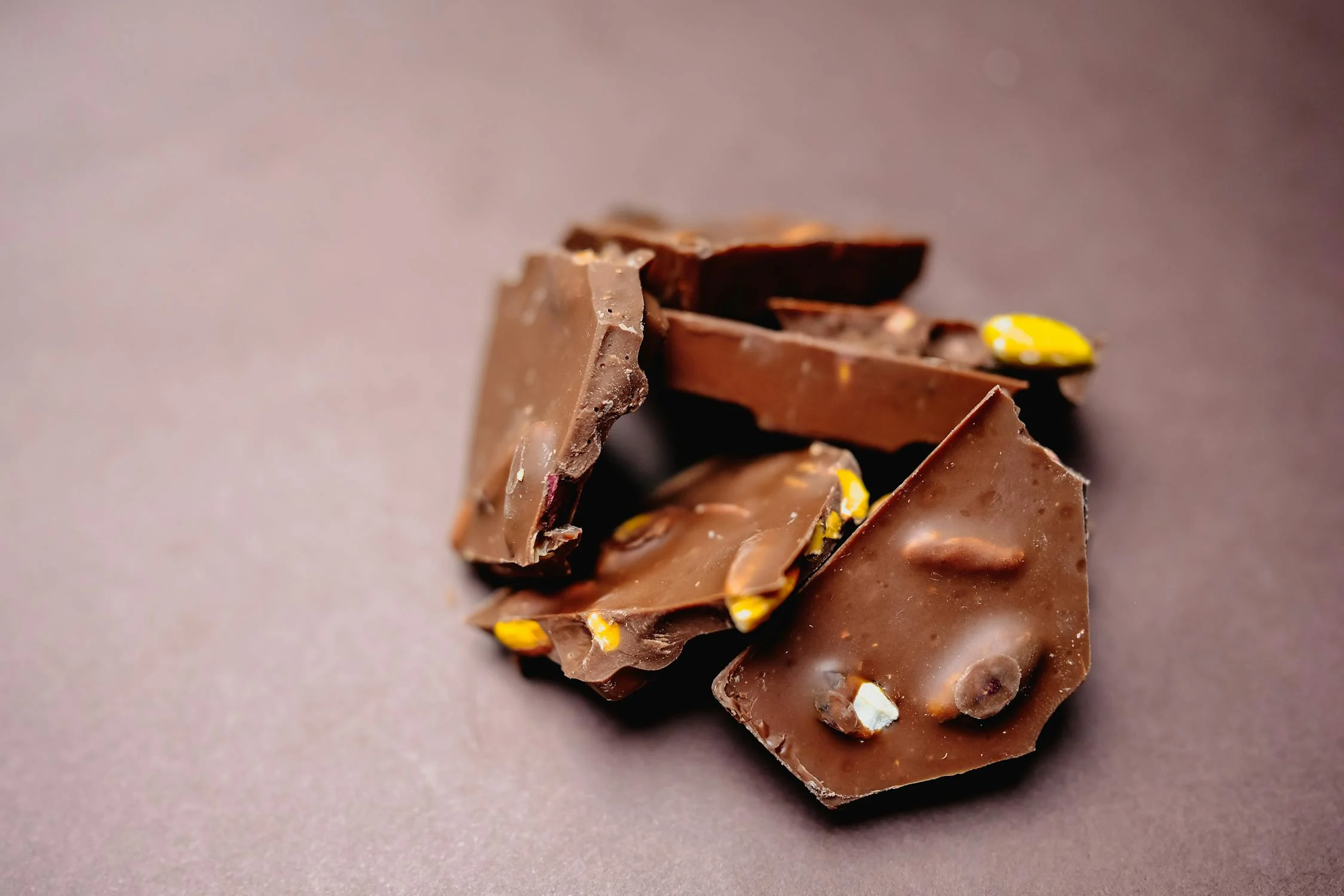
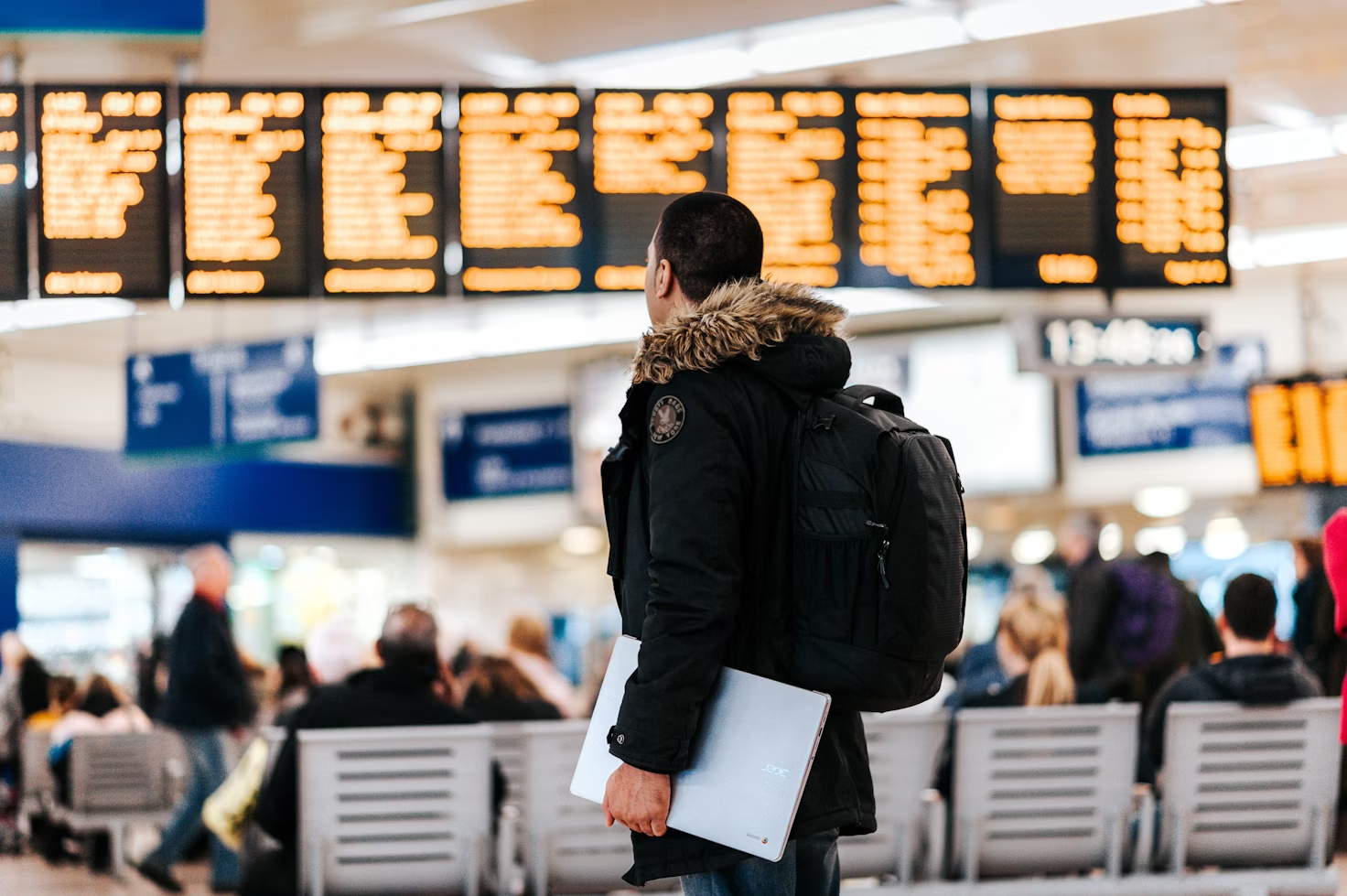
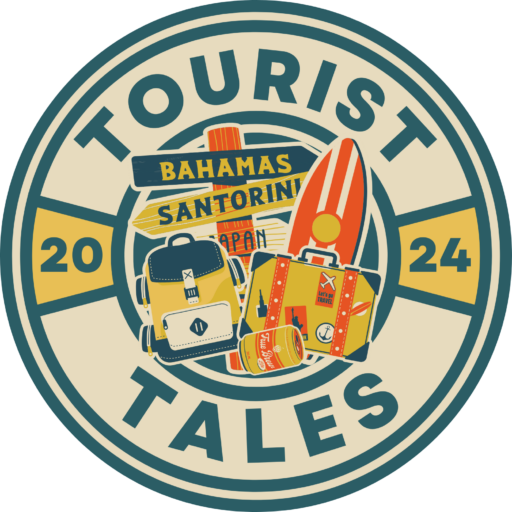
2 Responses
Hey this was a nice read. Looks like you used your time wisely. I spent a month in Korea earlier this year and really enjoyed it. I wrote a page on it on my site too. I am just writing my blog for fun. I like your site though and enjoyed reading this. It’s cool to see that people actually get out of Seoul and Busan a little when they visit.
Interesting! I’m planning on doing a similar itinerary… but I wish to spend more days in Seoul and maybe visit Seorak mountain. Would you say Jeju is a must see if one only has 14 days in Korea? I keep reading mixed reviews, some say it’s their favorite place in Korea, others that it’s overrated and not of much interest.